Pericardium
Pericardium, pericardium is a bag in which the heart is located. It has the form of an obliquely cut cone with a lower base located on the diaphragm and a vertex almost reaching the level of the sternum angle. The width of the pericardium extends more to the left.

In the pericardium, anterior, sternocostal, part is distinguished; Posterior, diaphragmatic, part and two lateral - right and left - mediastinal parts.
The thoracic and costal part of the pericardium faces the anterior thoracic wall, from which it separates with the lungs and pleura, with the exception of the pericardium adjacent to the sternum, the cartilages of the V-VI ribs and intercostal spaces and the left segment of the xiphoid process.
The lateral sections of the sternum-rib part of the pericardium are covered with the right and left leaves of the mediastinal pleura, the front edges of which border two triangles.
In the region of the upper triangle, the sternocostal portion of the pericardium is separated from the sternum by a loose connective and fatty tissue in which the thymus gland, thymus, is embedded in the children (see "Endocrine glands"). The condensed part of this fiber forms the so-called upper sternocarpmental ligament, lig. Sternopericardiacum superius, which fixes the anterior wall of the pericardium to the back surface of the sternum arm.
In the area of the lower triangle, the pericardium is also separated from the sternum by loose fiber, in which a densified part is extracted - the lower sternum-pericardial ligament, lig. Sternopericardiacum inferiuts: it fixes to the back surface of the sternum body the lower portion of the pericardium.
In the diaphragm part of the pericardium, the upper part, which participates in the formation of the anterior border of the posterior mediastinum, and the lower part covering the diaphragm are distinguished.
The upper part adjoins the esophagus, thoracic aorta and unpaired vein, from which this part of the pericardium is separated by a layer of loose connective tissue and a thin fascial leaf.
The lower part of the diaphragm part of the pericardium, which is its base, fuses tightly with the tendon center of the diaphragm; Slightly spreading to the anterolateral areas of its muscular part, it is connected to them with loose fiber.
The right and left mediastinal parts of the pericardium adhere to the mediastinal pleura; The latter is connected to the pericardium by means of a loose connective tissue and can be separated by careful preparation. In the thickness of this loose fiber, which connects the mediastinal pleura with the pericardium, the diaphragmatic nerve passes, n. Phrenicus, and the accompanying pericardial-diaphragmatic vessels, vasa pericardiacophrenica.
Pericardium consists of two parts: internal serous - serous pericardium, pericardium serosum, and external fibrotic - fibrous pericardium, pericardium fibrosum.
The serous pericardium consists of two serous sacs, one in the other, which is external, freely surrounding the heart, a serous sac of the pericardium proper, and the inner pericardium, tightly fused with the myocardium. The serous cover of the pericardium is a parietal plate, lamina parietalis, serous pericardium, and the serous cover of the heart is a visceral plate (epicardium), lamina visceralis (epicardium), and serous pericardium.
Fibrous pericardium, which is especially pronounced on the anterior wall of the pericardium, is fixed to the diaphragm, to the walls of large vessels and through ligaments to the inner surface of the sternum.

Epicardium passes into the pericardium on the basis of the heart, in the region of the confluence of large vessels, hollow and pulmonary veins and the exit of the aorta and pulmonary trunk. Between the epicardium and pericardium there is a slit-like space - the pericardial cavity, cavitas pericardialis. The cavity contains a small amount of fluid that moistens the serous surfaces of the pericardium, causing during the heart contractions the sliding of one serosa on the other.

If after the removal of the heart to consider the pericardium from the inside, then the large vessels in relation to the pericardium are located along its back wall along two lines - the right, more vertical, and left, somewhat inclined to it. On the right line, the upper hollow vein, the two right pulmonary veins and the lower hollow vein, from the left line - the aorta, the pulmonary trunk and the two left pulmonary veins - lie down on the right line.
At the site of the epicardium transition into the parietal plate of the serous pericardium, several sinuses are formed in a variety and shape. The largest of these are the transverse and oblique sinuses of the pericardium.
The transverse sinus of the pericardium, sinus transversus pericardii, is bounded from above by the pericardium, from behind - by the superior hollow vein and anterior surface of the atria, in front - by the aorta and pulmonary trunk; Right and left, the transverse sinus is open.

The oblique sinus of the pericardium, sinus obliquus pericardii, is located below and behind the heart. It is confined to the front of the epicardium with the posterior surface of the left atrium, posterior to the posterior, mediastinal, part of the pericardium, to the right - the inferior vena cava, to the left - pulmonary veins, also covered with epicardium. In the upper blind pocket of this sinus is a large number of nerve nodes and trunks of the heart plexus (see "Nerves of the heart", vol. IV).
Between the epicardium covering the initial part of the aorta (up to the level of the deviation from the brachiocephalic trunk) and the parietal plate of the serous pericardium proceeding from it, a slight protrusion is formed. On the pulmonary trunk, the epicardial transition to the indicated parietal plate occurs at the level of the arterial ligament, lig. Arteriosum (sometimes lower). In the inferior vena cava, this transition occurs below the site of an unpaired vein, v. Azygos. On pulmonary veins, the junction site almost reaches the collar of the lungs. In the inferior vena cava, the epicardial transition to the parietal plate of the serous pericardium is located close to its mouth.

On the posterolateral wall of the left atrium, between the left upper pulmonary vein and the base of the left auricle, the pericardial fold runs from left to right, the so-called fold of the upper left vena cavae, plica venae cavae sinistrae (exists in the embryonic period), in the thickness of which lies the oblique vein of the left atrium, V. Obliqua atrii sinistri, and the nerve plexus (see "Nerves of the heart", vol. IV).
Innervation: nn. Phrenici, vagi and trunci sympathici branches.
Blood supply: branches a. Thoracica interna - rr. Pericardia-cophrenici and branches aa. Phrenicae superiores.

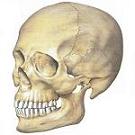
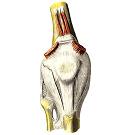

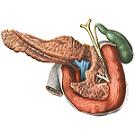
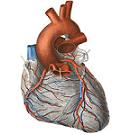

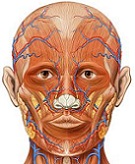

Comments
When commenting on, remember that the content and tone of your message can hurt the feelings of real people, show respect and tolerance to your interlocutors even if you do not share their opinion, your behavior in the conditions of freedom of expression and anonymity provided by the Internet, changes Not only virtual, but also the real world. All comments are hidden from the index, spam is controlled.